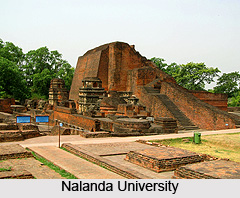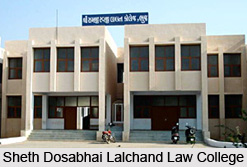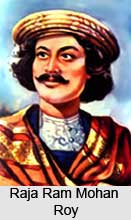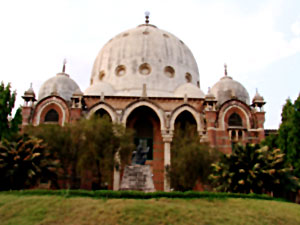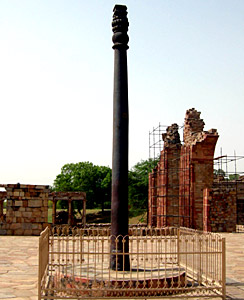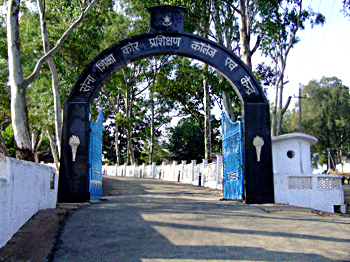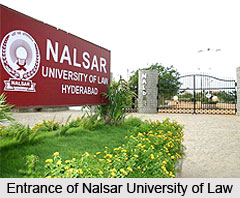 Nalsar University of Law is a legal studies institution situated in Shamirpet, Hyderabad, Telangana, India. It is officially known as National Academy of Legal Studies and Research or NALSAR. It was established in 1998 as a state university with the aim of conducting teaching in law. It is ranked as one of the best law schools in the country. India Today ranked NALSAR as the best law school in India in the latest 2013 ranking. It was ranked first by Outlook in 2012 and was ranked second in 2010 and 2011.
Nalsar University of Law is a legal studies institution situated in Shamirpet, Hyderabad, Telangana, India. It is officially known as National Academy of Legal Studies and Research or NALSAR. It was established in 1998 as a state university with the aim of conducting teaching in law. It is ranked as one of the best law schools in the country. India Today ranked NALSAR as the best law school in India in the latest 2013 ranking. It was ranked first by Outlook in 2012 and was ranked second in 2010 and 2011.
Courses Offered by Nalsar University of Law
The institute offers a five-year integrated B.A LL.B. (Hons.) program; a one year postgraduate LL.M. program; a two-year self-financed Master`s Degree in Business Laws and Administration (MBLA); a one year Master of Philosophy (M.Phil) and a Doctor of Philosophy (Ph.D). Students can get admission to undergraduate program via the highly competitive national-level Common Law Admission Test (CLAT). And for the one year postgraduate LL.M. 50 students are admitted through CLAT with ten more allocated to foreign nationals. NALSAR now also offers a two-year M.B.A. program.
Facilities of Nalsar University of Law
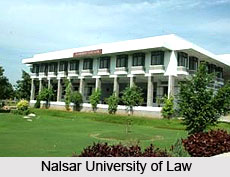 The law school is divided into five precincts including an administrative block, an academic block, a residential block, a stadium and a law school dining hall. The academic block consists of the classrooms, conference halls, the library, the internet centre, a moot court hall, and research centers. The residential block consists of four separate hostels for boys and girls.
The law school is divided into five precincts including an administrative block, an academic block, a residential block, a stadium and a law school dining hall. The academic block consists of the classrooms, conference halls, the library, the internet centre, a moot court hall, and research centers. The residential block consists of four separate hostels for boys and girls.
The law library has a collection of more than 27,000 items comprising law reports, reviews, periodicals, manuals and choicest publications of textbooks and other resources. The various research centers at NALSAR are M.K. Nambiyar SAARC Law Research Centre, Dr. N.C. Banerjee Centre for Intellectual Property Law Studies, Dr. S.P. Chatterjee Centre for Environmental Law Studies, Centre for Land Rights, Centre for Humanitarian Law and Refugee Law, Centre for Tax Laws, and Centre for Disaster Management and Law just to name a handful. Recently, an auditorium with a seating capacity of close to 500 has also been added.
Achievements of Nalsar University of Law
NALSAR bagged India`s oldest Parliamentary Debate at St. Stephens College, Delhi in 2005.
•It again won the inaugural IIM Bangalore Parliamentary Debating Championship `Cicero` in 2009.
•The institution has won a number of inter-college quizzes in the twin cities.
•It was winner in BITS Pilani-Hyderabad Campus` annual fest Pearl 2012 and 2013.
•NALSAR has published a number of law journals including NALSAR Law Review, NALSAR Student Law Review, Journal of Corporate Affairs and Corporate Crimes, Indian Journal of Constitutional Law, Media Law Review, Environmental Law & Practice Review, The Indian Journal Law & Economics, Nalsar ADR Journal and Indian Journal of Intellectual Property Law.
